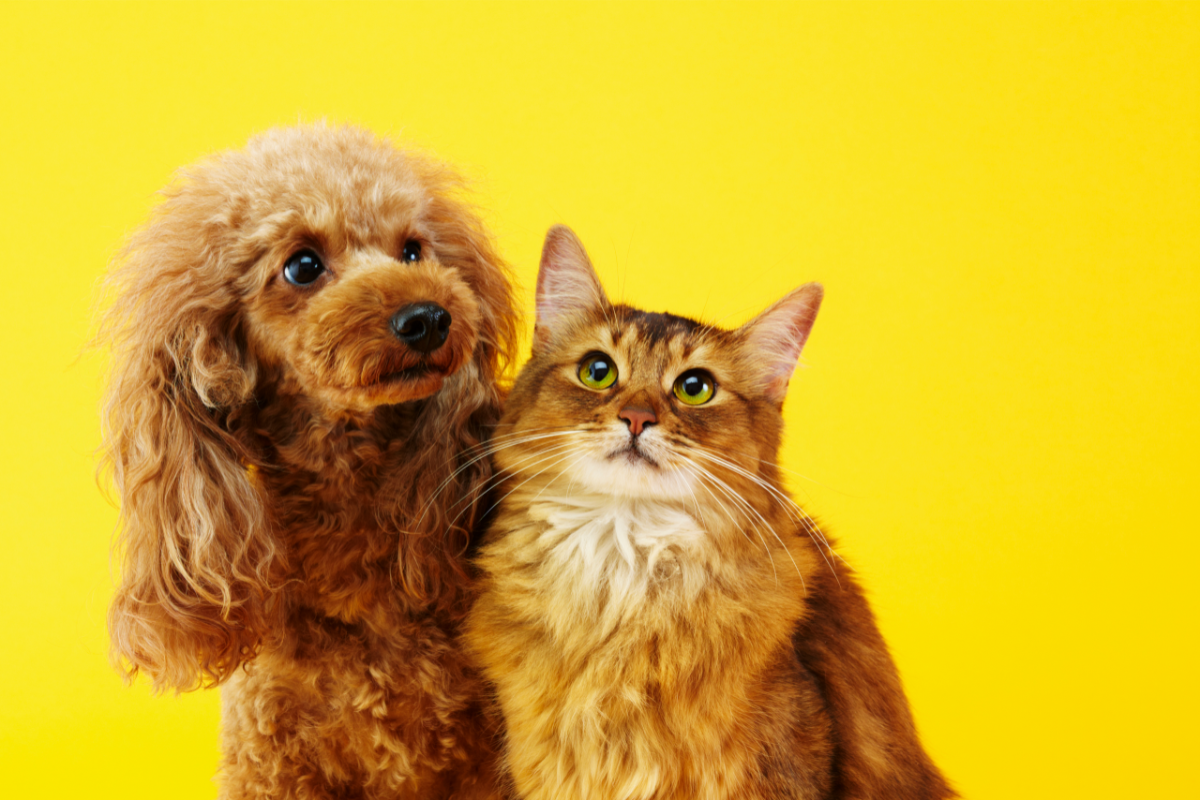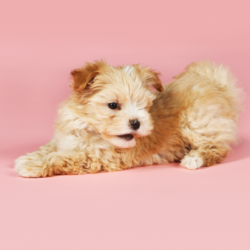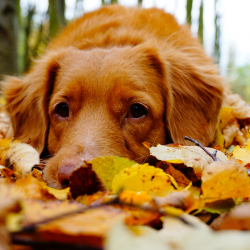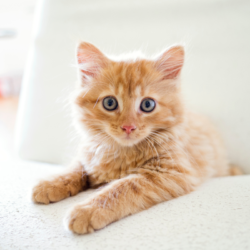Careful grooming, well-kept paw pads, and why not some pretty little ribbons… this summer, your pet will undoubtedly be the most stylish. As an animal lover, you’re planning to involve your pet in all your summer activities, so that it can fully enjoy this sunny season by your side. However, it’s crucial to remember that your furry friend needs special care during the hot weather. It’s essential to be extra vigilant when it comes to hydration: if you feel that the atmosphere is becoming heavier and more uncomfortable, don’t forget that your pet is just as, if not more, sensitive to these variations. Whether it’s a kitten, an adult cat or a dog, make sure they’re properly hydrated throughout the summer.
How much water do pets need?
Hydration is a fundamental aspect of pet health. Each species, breed and individual may have its own specific water requirements. As a general rule, a pet should consume around 50 to 70 millilitres of water per kilogram of body weight per day. However, these requirements may increase in summer or depending on the animal’s physical activity. For pets, water not only quenches thirst; it also plays a crucial role in regulating body temperature, digestion and waste elimination, and in transporting nutrients.
What impact does heat have on our pets’ hydration?
Summer brings with it a rise in temperatures, which can directly affect our pets’ hydration. The heat increases their need for water because they dehydrate more quickly, particularly through breathing and perspiration in the legs and abdomen for dogs, and mainly through breathing for cats. It is therefore crucial to ensure constant access to fresh, clean water, to provide areas of shade and coolness, and to limit physical exercise during the hottest part of the day to maintain good hydration.
How do we keep our favourite furballs well hydrated?
Hydration isn’t just about drinking; it’s a pillar of animal health that requires special attention. To encourage your pet to hydrate regularly, diversify the sources of fresh water in your home by placing several containers in different areas, thus increasing the likelihood that he’ll stay hydrated throughout the day.
The water you offer can vary: distilled, filtered, bottled or straight from the tap. It’s a good idea to allow your pet to choose the water that suits him best, encouraging his desire and pleasure to stay hydrated.
Water fountains are particularly effective at stimulating pets’ interest. Their continuous flow system naturally attracts the animal’s attention and encourages frequent consumption, which is crucial for proper hydration.
For animals that don’t drink much, introducing wet feed into their diet is a sensible strategy. These products, with a water content of at least 75%, such as pâtés, mousses or terrines, make a significant contribution to daily water intake. What’s more, adding water to their kibbles or home-cooked meals can be a simple and effective way of increasing their water intake.
By following these tips, you can play an active role in managing your pet’s hydration, ensuring its long-term health and well-being.
Take the time to hydrate and refresh your hairball
Keeping your pet well hydrated is essential, especially during the summer months when temperatures soar. As well as having access to fresh water at all times, maintaining a cool environment is essential. Keep your home at a moderate, well-ventilated temperature. In hot weather, consider using fans or an air conditioner if possible, to provide your companion with a cool haven.
Outside, it’s vital that your pet has access to shaded areas where it can rest away from the direct rays of the sun. Misting devices, which disperse a fine mist of water, can provide immediate relief and are particularly popular with pets during the heatwave.
Extreme heat: Be careful with your pets’ paw pads
It’s also a good idea to moisten your pet’s paw pads to help cool them down, as they act as natural temperature regulators. Specific products, such as Vetoform spray with Propolis and tea tree oil, can not only moisturise but also protect and repair the pads, adding a layer of care to the cooling routine.
Regular grooming is also a key factor in maintaining good thermoregulation. Brushing your pet helps to remove dead hair and prevent tangles from forming, allowing the skin to breathe better and air to circulate efficiently through the coat. For long-haired breeds, adapted clipping can be considered to reduce heat stress.
What time should I walk my dog in summer?
When it comes to walks, it’s wise to plan them for early morning or late afternoon, when the sun is less intense. This minimises the risk of dehydration and heatstroke, while giving your dog the physical activity it needs to stay healthy.
Remember that your pet’s hydration is just as vital as its nutrition, exercise and regular veterinary care. By taking these preventive measures, you can make a major contribution to your pet’s well-being and ability to cope with heat waves. Keeping your pet hydrated and cooled is not just a matter of comfort, but a real commitment to its overall health.
Managing your dog’s hydration when travelling
When you’re planning to travel with a pet, managing its hydration becomes an even more crucial aspect. Changes in environment, temperature and activity can all affect your pet’s water requirements.
Tips for travelling
Before leaving, it’s advisable to limit your pet’s stress as much as possible, as anxiety can alter its drinking habits. Gradually prepare him for the journey by getting him used to his transport container and associating him with positive experiences.
During the journey, take frequent breaks to allow your pet to stretch its legs and hydrate. This is particularly important on long car or plane journeys. It’s also essential to avoid feeding your pet just before or during the journey to prevent motion sickness, which can reduce its desire to drink.
Make sure you have fresh water available and check the water bowl regularly if it is accessible in the transport container. If you’re travelling by plane, check with the airline what options are available for hydrating your pet.
Portable hydration solutions
There are a number of practical solutions for maintaining adequate hydration while on the move. Water bottles with integrated bowls are ideal for walks and excursions. They make it easy for your pet to drink without wasting water.
There are also collapsible water bowls that can be easily transported and deployed during stops. For longer journeys, consider a portable water dispenser, which can hold a larger quantity of water and guarantee constant access throughout the journey.
Hydrating jellies are another innovative option, especially for cats who often prefer to lick their water rather than drink it. These jellies can be given directly or added to food to increase water intake.
Recognising and preventing heatstroke
Heatstroke can be extremely dangerous for pets and occurs when the animal is unable to regulate its body temperature in the face of exposure to heat. It’s vital to know how to recognise the signs of heatstroke so you can act quickly and appropriately.
What are the symptoms of heatstroke in pets?
An animal suffering from heatstroke will present a number of alarming symptoms. A sudden rise in body temperature, usually above 39.4°C (103°F), is a key indicator. You may also observe rapid and difficult breathing, excessive salivation, an accelerated heart rate and, in more serious cases, vomiting or convulsions. The animal’s gums may also turn bright red, and it may show weakness, confusion or apathy.
Symptoms of dehydration in dogs
We should bear in mind that in summer, our dog can really suffer from excessive heat and dehydration. When his gums, which are usually pink and moist, become dry and sticky, this is already a warning sign. This sign indicates difficulty in panting and sweating normally. At this point, the dog is no longer able to regulate its body temperature naturally and is probably suffering from heatstroke. These symptoms are often accompanied by loss of appetite, lethargy and sunken eyes.
How can I tell if my cat is dehydrated?
To find out if your domestic feline is properly hydrated, you need to check the suppleness of its epidermis. Gently lift the skin at the back of your pet’s neck. Normally the skin returns immediately. If it doesn’t, you’ll need to keep a close eye on him, as this is a tangible sign of dehydration. As with dogs, anorexia, sunken eyes, drowsiness and sticky mucous membranes are generally associated with dehydration.
What preventive measures should be taken?
To prevent heatstroke, it’s essential to behave responsibly on hot days. First of all, make sure your pet always has access to fresh water and a cool, well-ventilated environment. Avoid exposing your pet to intense heat, especially between 10am and 4pm, and never leave your pet in a vehicle parked in the sun, even for a short time.
When you go out, choose the coolest times of the day and opt for shady spots. For dogs, avoid strenuous exercise during heatwaves and opt for lighter activities. Constantly monitor their condition and encourage them to drink regularly.
It’s also advisable to cool their coats with lukewarm water (ice-cold water can be counterproductive as it can cause thermal shock). Finally, familiarise yourself with appropriate grooming for the summer season, especially for long-haired breeds, to help regulate the animal’s body temperature.
By taking these preventive measures, you can help your pet avoid the risks of heatstroke and enjoy a safe and pleasant summer.
Special cases: Older dogs and puppies
Older dogs and puppies are special cases when it comes to hydration, requiring extra vigilance and special care to maintain optimum fluid balance.
Specific hydration needs
Older dogs and puppies are the most vulnerable groups with special hydration requirements. Older dogs may suffer from kidney or urinary problems that require constant hydration to help eliminate toxins from their bodies. Similarly, puppies, with their high level of activity and still-developing thermoregulatory system, require special attention to avoid dehydration.
Hydration advice for these groups
For older dogs:
- Regular monitoring of water intake: Make sure they’re drinking enough by monitoring the amount of water they consume each day.
- Easy access to water: Place bowls of water in various places that are easily accessible, especially if your dog suffers from arthritis or muscle weakness.
- Encourage hydration: Motivate them to drink by adding salt-free chicken stock to their water or offering them flavoured ice cubes.
For puppies:
- Plenty of fresh water: Replace water regularly to keep it clean and attractive, encouraging puppies to hydrate frequently.
- Training: Get your puppy used to drinking water from an early age. This will establish good hydration habits for the rest of his life.
- Monitoring: Watch for signs of dehydration, especially after long periods of play or exercise, and make sure they rehydrate afterwards.





